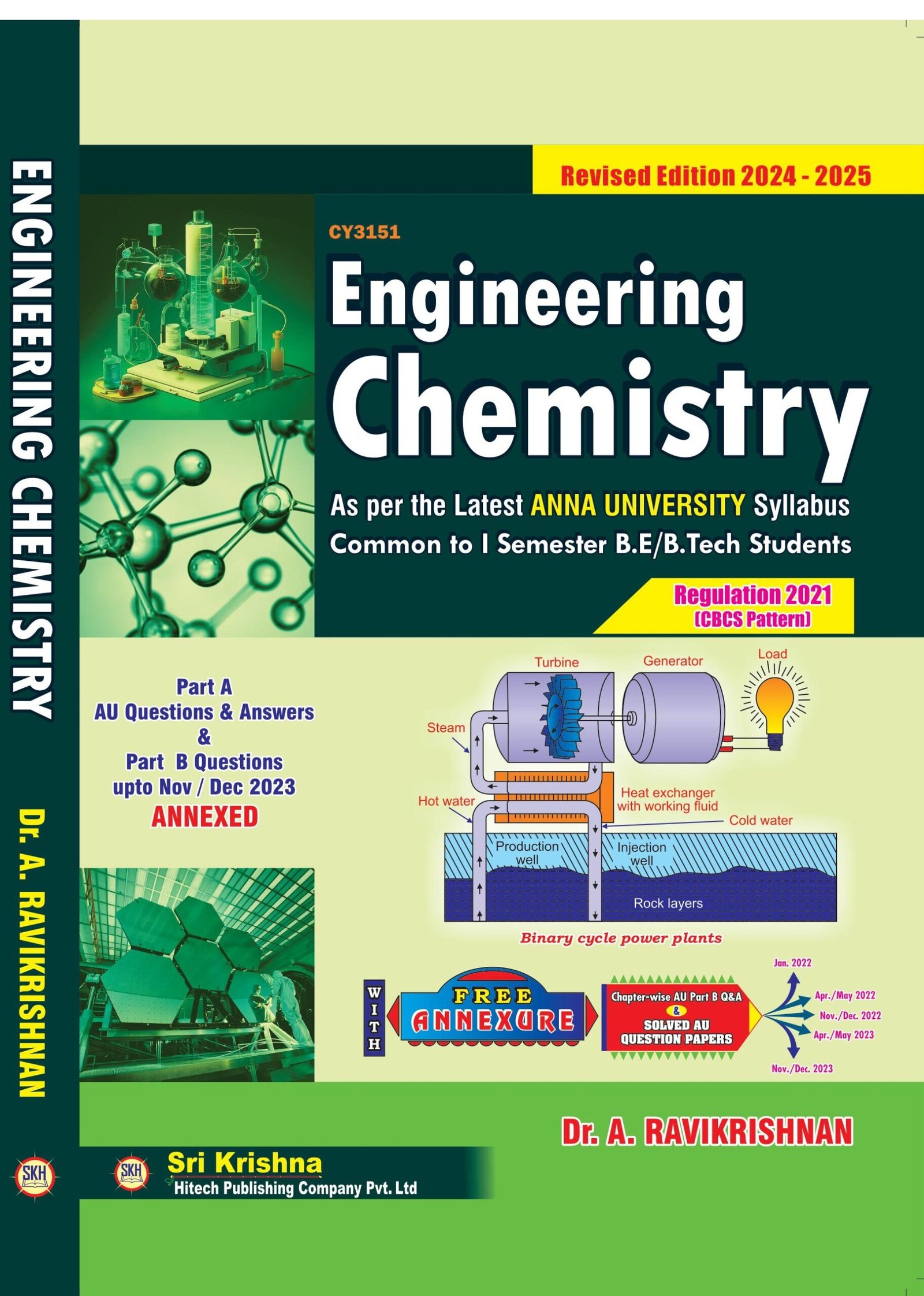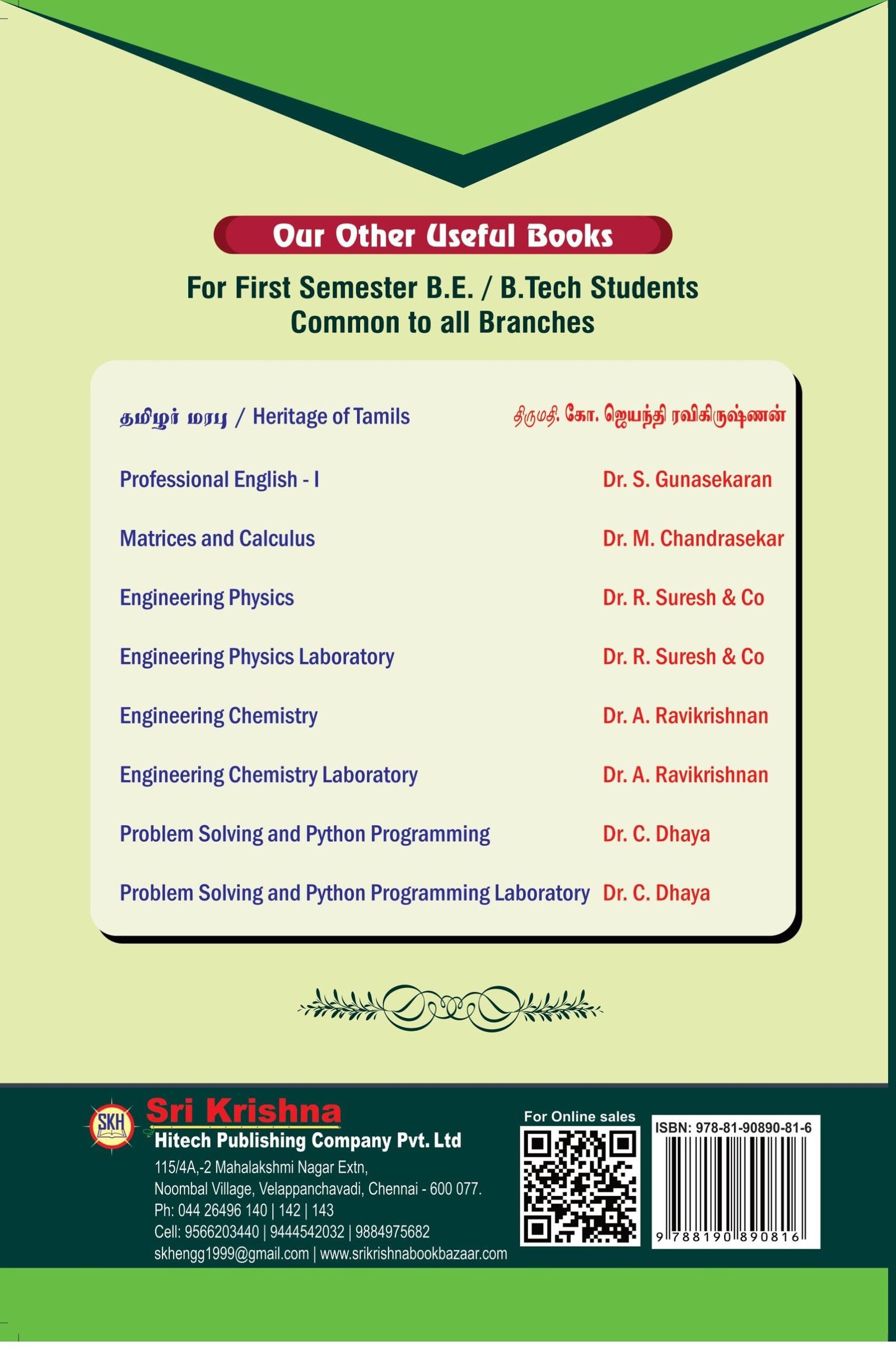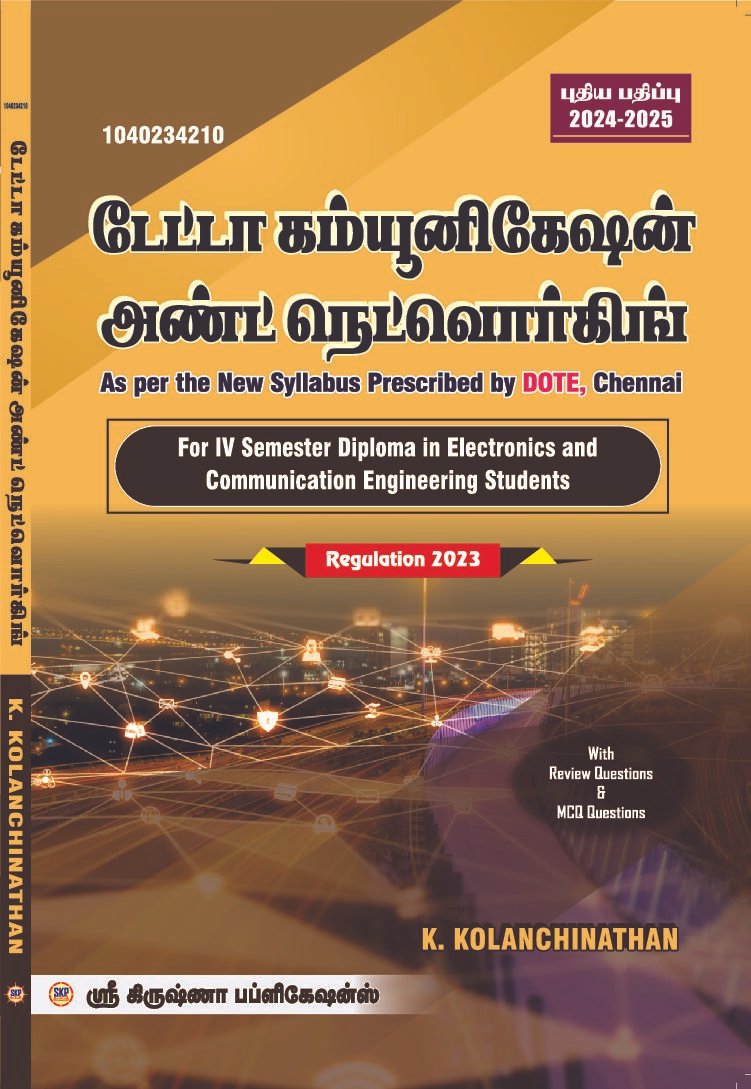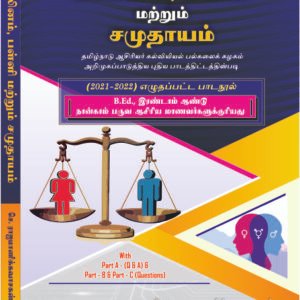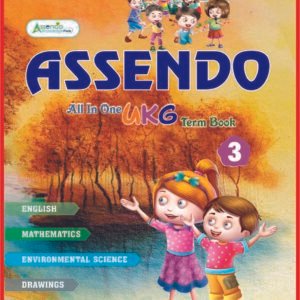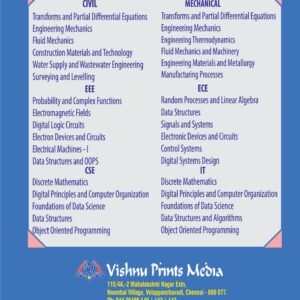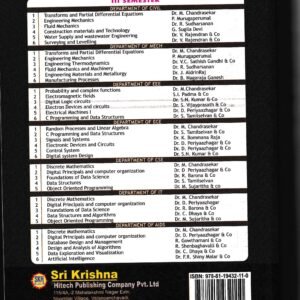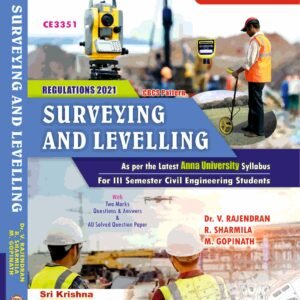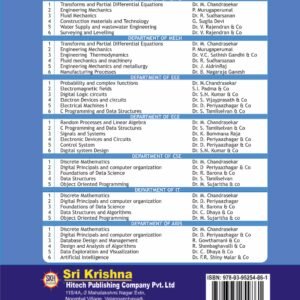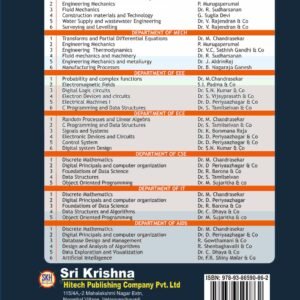CY3151 ENGINEERING CHEMISTRY
UNIT I WATER AND ITS TREATMENT
Water: Sources and impurities, Water quality parameters: Definition and significance of-colour,
odour, turbidity, pH, hardness, alkalinity, TDS, COD and BOD, flouride and arsenic. Municipal water
treatment: primary treatment and disinfection (UV, Ozonation, break-point chlorination).
Desalination of brackish water: Reverse Osmosis. Boiler troubles: Scale and sludge, Boiler
corrosion, Caustic embrittlement, Priming &foaming. Treatment of boiler feed water: Internal
treatment (phosphate, colloidal, sodium aluminate and calgon conditioning) and External treatment
– Ion exchange demineralisation and zeolite process.
UNIT II NANOCHEMISTRY
Basics: Distinction between molecules, nanomaterials and bulk materials; Size-dependent
properties (optical, electrical, mechanical and magnetic); Types of nanomaterials: Definition,
properties and uses of – nanoparticle, nanocluster, nanorod, nanowire and nanotube. Preparation
of nanomaterials: sol-gel, solvothermal, laser ablation, chemical vapour deposition,
electrochemical deposition and electro spinning. Applications of nanomaterials in medicine,
agriculture, energy, electronics and catalysis.
32
UNIT III PHASE RULE AND COMPOSITES
Phase rule:Introduction, definition of terms with examples. One component system – water system;
Reduced phase rule; Construction of a simple eutectic phase diagram – Thermal analysis; Two
component system: lead-silver system – Pattinson process.
Composites: Introduction: Definition & Need for composites; Constitution: Matrix materials
(Polymer matrix, metal matrix and ceramic matrix) and Reinforcement (fiber, particulates, flakes and
whiskers). Properties and applications of: Metal matrix composites (MMC), Ceramic matrix
composites and Polymer matrix composites. Hybrid composites – definition and examples.
UNIT IV FUELS AND COMBUSTION 9
Fuels: Introduction: Classification of fuels; Coal and coke: Analysis of coal (proximate and
ultimate), Carbonization, Manufacture of metallurgical coke (Otto Hoffmann method). Petroleum
and Diesel: Manufacture of synthetic petrol (Bergius process), Knocking – octane number, diesel oil
– cetane number; Power alcohol and biodiesel.
Combustion of fuels: Introduction: Calorific value – higher and lower calorific values, Theoretical
calculation of calorific value; Ignition temperature: spontaneous ignition temperature, Explosive
range; Flue gas analysis – ORSAT Method. CO2 emission and carbon foot print.
UNIT V ENERGY SOURCES AND STORAGE DEVICES
Stability of nucleus: mass defect (problems), binding energy;Nuclear energy: light water
nuclear power plant, breeder reactor. Solar energy conversion: Principle, working and applications
of solar cells; Recent developments in solar cell materials. Wind energy; Geothermal
energy;Batteries: Types of batteries, Primary battery – dry cell, Secondary battery – lead acid battery
and lithium-ion-battery; Electric vehicles-working principles; Fuel cells: H2-O2 fuel cell, microbial
fuel cell; Supercapacitors: Storage principle, types and examples.

